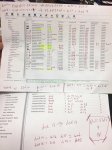Come up with an easy way to get a serial number from a multipath disk.
For those of us with mulitpath disks, associating a disk on the 'Volume Status' page with a serial number and physical disk is a multi-step process that should be easier.
When a drive fails, we go to the 'Volume Status' page. That gives us a multipath/disk?? address. That address must be taken to the 'View Multipaths' page. From the 'View Multipaths' page, you have to Ctrl-F find the multipath disk then expand to see the actual physical /dev/ disk. From there, you have to go to the 'View Disks' page to get the serial number.
When replacing back a disk, you have to reverse the process, finding the serial number on the 'View Disks' page, figuring out how that maps to the multipath disk then you need to head back to the Volumes page to get to Volume Status then to replacement.
The multipath address, by the way, is pretty much useless. You can't run any tools (such as smartctl) against the multipath.
From the Volume Status, there should be a way to more quickly get to the physical disk. Maybe a hover-over that exposes the /dev/ path and serial number? Or make it the Name clickable to pull up the status for that device that includes the physical disk information?
All this came about because we ran out of slots in and had to hunt down bad disks for removal. Since we have 25 slots, when a drive is replaced, it doesn't always get immediately pulled. Finding bad active disks, bad inactive disks from among the good disks is time consuming because of flipping back and forth between screens. I ended up creating this obnoxious document...
View attachment 24259
In any case, there has to be an easier way. And, unlike requests to flash drive lights which is highly hardware dependent, I think an easier mapping of multipath disks can be done in a hardware agnostic way.
Cheers,
Matt

